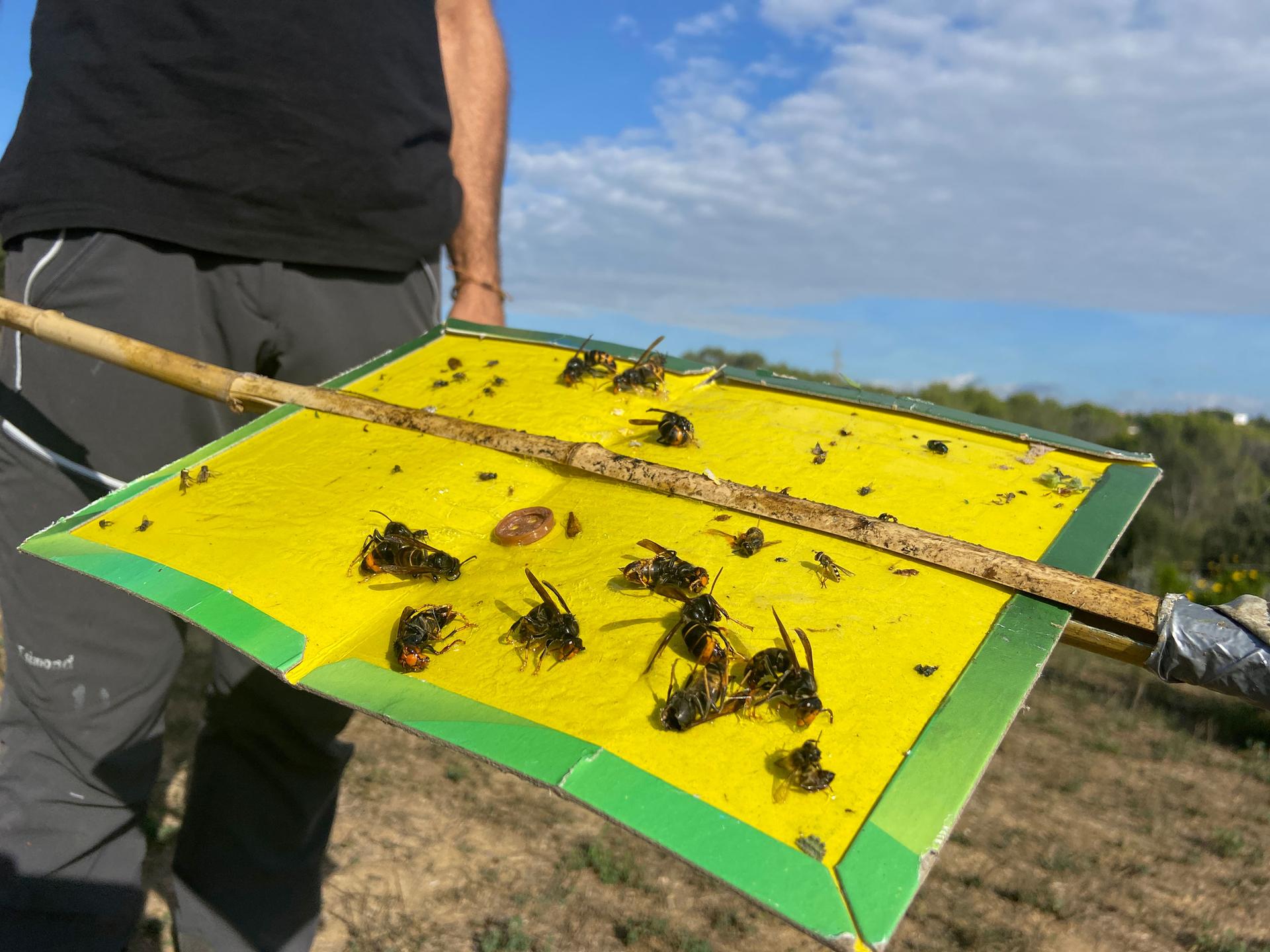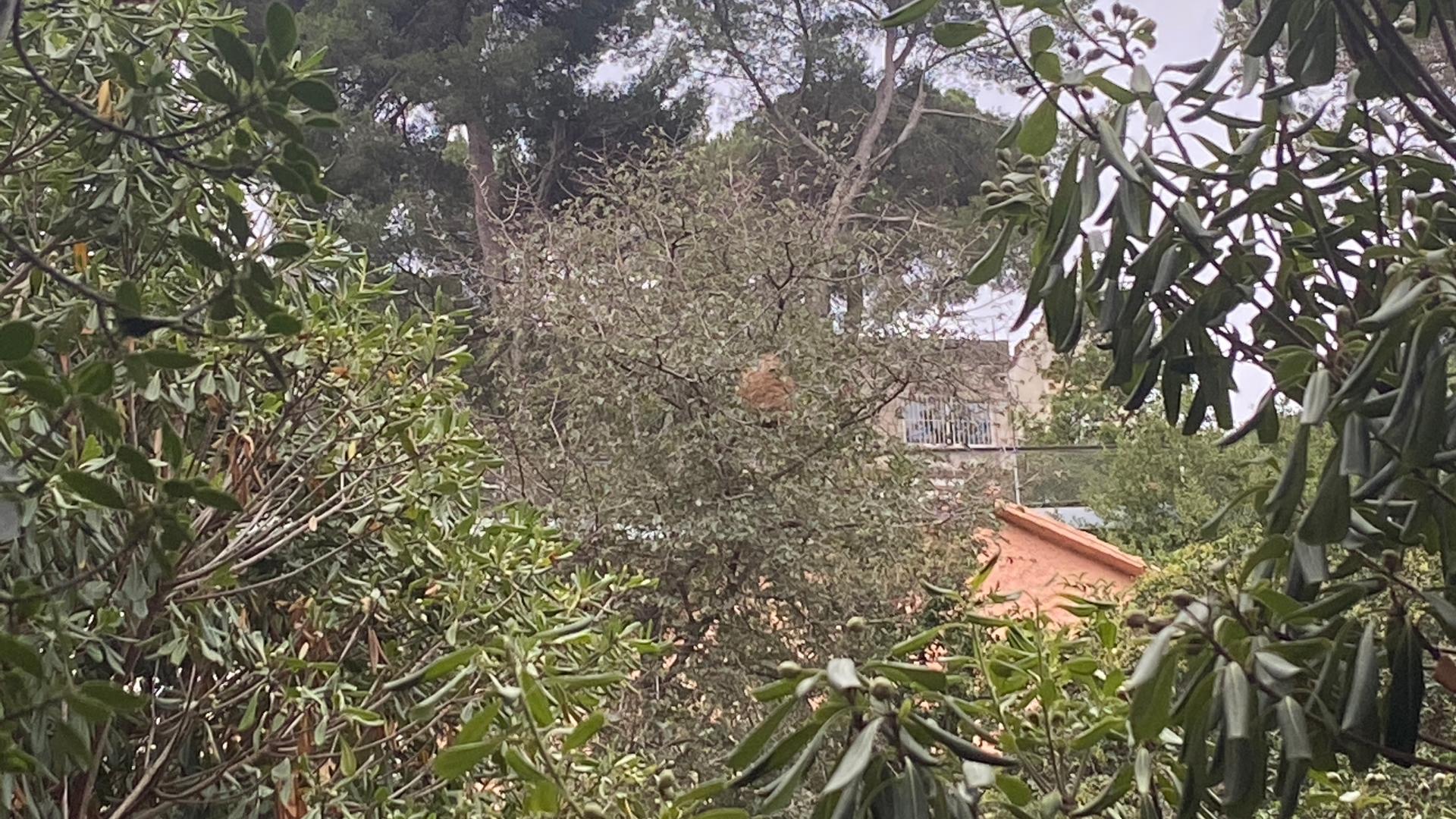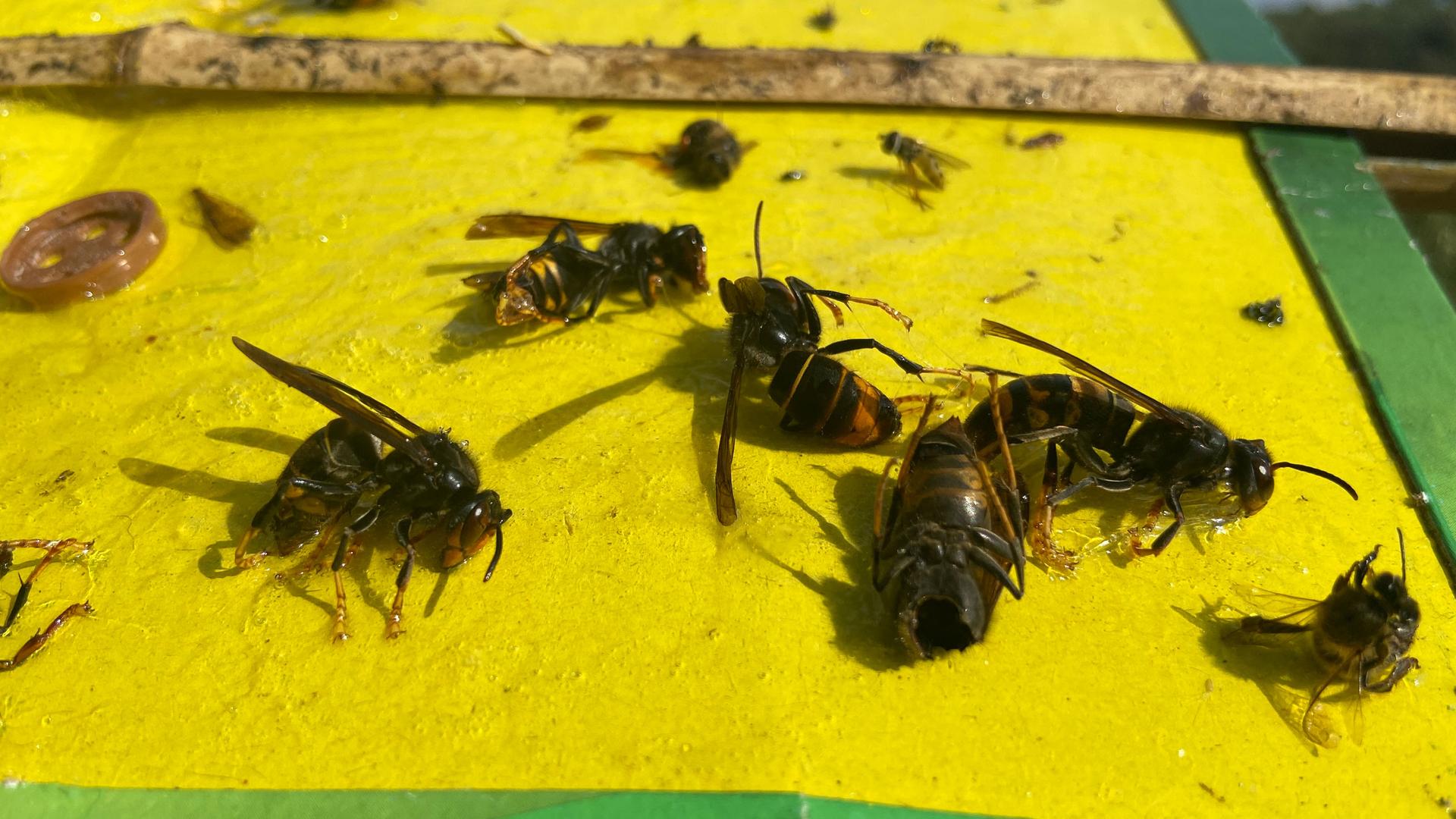Beekeeper Samuel Ramal’s hives just outside the town of Sabadell in northeast Spain look fine. But Ramal often has to defend them against hornets.
He runs back and forth in front of his hives, swinging a bamboo pole with a piece of bright yellow glue paper attached to the top of it.
“I spend all of my free time here defending my hives,” Ramal said. “We’re losing money because we’re not making honey. And, he said, “there are more hornets every day.” Ramal said he’s lost a honey harvest this fall worth more than $3,000.
In the US, there’s a huge effort underway to stop the spread of the Asian giant hornet, which preys on insects, including honeybees. Meanwhile, Europeans have been battling its close cousin, the Velutina hornet, for about 15 years. Many Spanish beekeepers have sent out a mayday for help, but so far they’ve been left to defend their hives on their own.

The Velutina hornet often hovers in groups of two or three right outside the entrances to Ramal’s hives. In a flash, one caught a bee in mid-flight. Typically, it would cut the bee’s head off and take the body home as food. But Ramal was ready.
About 10 Velutinas stuck to Ramal’s swatter. They’re roughly four times the size of the bees. They have black bodies with orange bands, with giant heads and mandibles. They bite hard but their sting is worse.
“I’m used to bee stings but not these hornets,” he said. “I’ve been bitten twice. The wound swells up and hurts for days on end. Some people have to go straight to the hospital,” he said.

The Velutina hornet arrived accidentally in Europe from China by ship about 15 years ago, wreaking havoc on honeybee populations.
Ramal said that in Spain, there’s currently no national plan or even a hotline to report the invasive Velutina.
He said he’s lost 20 out of his 100 hives this year. For now, it’s up to each town hall to come up with a plan to fight the predators. In small villages, that means, well, it’s better to stock up on glue-paper than wait for the cavalry.

But it’s hardly much better in cities. For one, the nests are not easy to spot. They’re high up in trees, or sometimes underground.
On a recent morning, a retired school teacher named Paco Navarro showed The World a Velutina nest in an oak tree near his home in Barcelona. He said he reported the nest in late August to the police and city hall. The exterminators didn’t arrive until early November.
The two men, Mauro and Pere, wore hornet-proof padding and carried a giant can of insecticide. They didn’t give their last names as they weren’t authorized to speak to the media. Mauro also assembled a paint-ball style gun loaded with frozen globs of poison.
He warned to stay alert in case the hornets swarmed.

Within 15 feet of the tree, he let loose a volley of poisonous balls that pierced the nest. Angry hornets zoomed everywhere. Mauro said the poison will kill most of them, but not all, and the ones that survive will settle down again and return to the nest.
“Each season we lose ground against the Velutina,” he said. “We can’t get them all. Various queens, he said, “are sure to escape.” And then they start new colonies.
The Spanish government estimates the Velutina giant hornet is extending its territory southward by some 60 miles a year, putting more honeybees and other pollinators at risk.

But not all hope is lost. Some honeybees have learned to swarm on top of the giant hornets “cooking” them until they overheat and die.
Back in Sabadell, beekeeper Ramal said his bees have at least started banding together.
“Look how the bees form a solid block just outside the entrance of their hive,” he said. “The hornets won’t attack the group. This gives returning bees a safe landing pad.”
But that doesn’t mean Ramal can let down his guard. He is quick to pick up his homemade hornet swatter and try to take down the Velutina, one swing at a time.
The World is an independent newsroom. We’re not funded by billionaires; instead, we rely on readers and listeners like you. As a listener, you’re a crucial part of our team and our global community. Your support is vital to running our nonprofit newsroom, and we can’t do this work without you. Will you support The World with a gift today? Donations made between now and Dec. 31 will be matched 1:1. Thanks for investing in our work!
